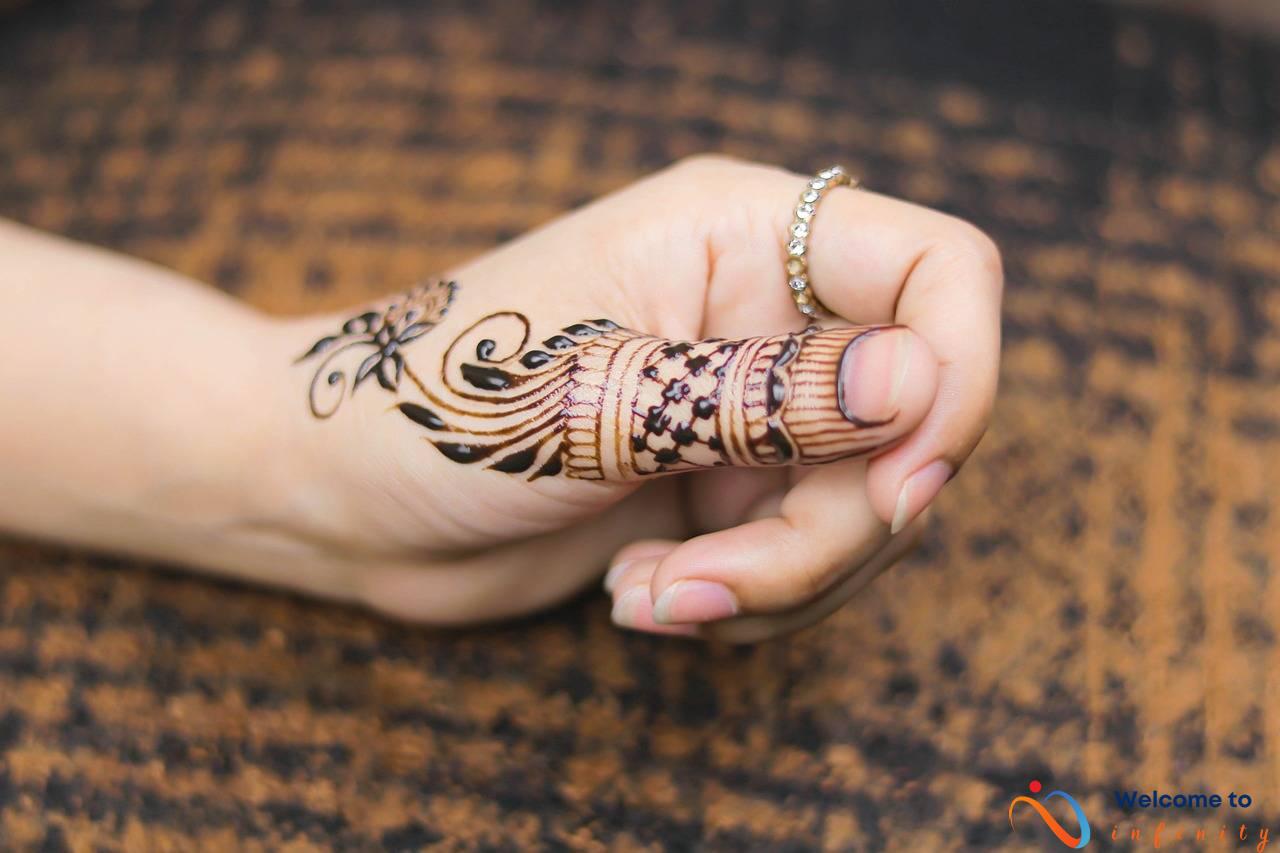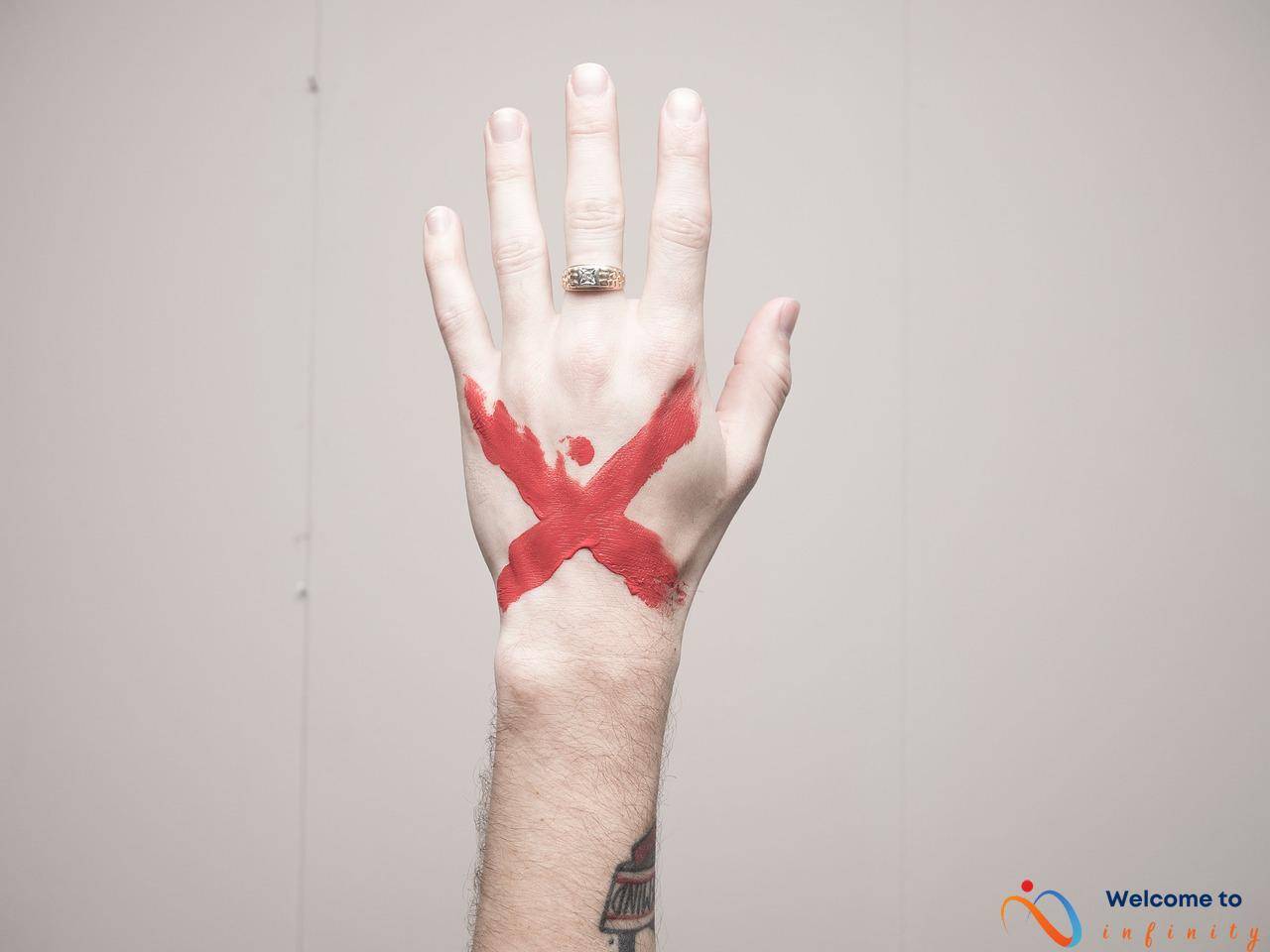Japanese tattoo art has a long and rich history, dating back centuries to traditional Irezumi. Irezumi was not only seen as a form of body art, but also as a spiritual practice with deep cultural significance. It featured bold lines, vibrant colors, and intricate designs inspired by nature and mythology.
Some of the most popular motifs of Japanese tattoo art include koi fish and dragons. Koi fish tattoos symbolize strength, perseverance, and good luck, with different colors and directions representing specific aspects of life. Dragons, on the other hand, represent power, wisdom, and good fortune, embodying the forces of the natural world and the power of the emperor.
Over time, Japanese tattooing has evolved, giving rise to modern Horimono. This new contemporary style still incorporates traditional techniques and styles, while also allowing artists to explore new styles and techniques influenced by the West and their personal creativity. Horimono has gained popularity worldwide, with tattoo artists creating stunning designs that blend the old with the new.
The art of Japanese tattooing is inextricably linked to the country's rich history, culture, and spirituality. Each tattoo is unique and tells a story, reflecting the individual's identity, beliefs, and values. Through Japanese tattoo art, we can catch a glimpse of its past, present, and future, as it continues to evolve and inspire artists around the world.
The History of Irezumi
Irezumi, also known as traditional Japanese tattooing, has a rich history that dates back centuries. It is believed that during the Jomon period (10,000 BC to 300 BC), tattoos were used for decorative purposes and to identify social status. However, the roots of Irezumi can be traced back to the Edo period (1603-1868), where it was a highly respected art form.
Many Irezumi artists were also skilled painters, and the tattoos themselves were seen as an extension of their artwork. Irezumi was also closely tied to spirituality, with many tattoos featuring images of gods and mythical creatures.
The process of Irezumi involves using a traditional hand technique, where the artist holds a wooden or metal stick with a needle attached to the end. The needle is dipped in ink and then repeatedly pressed into the skin to create the desired design. This technique is quite painful and requires a great deal of skill and precision.
During the Meiji period (1868-1912), Irezumi was seen as a symbol of criminality and banned by the government. However, in the post-World War II period, tattoos regained popularity and were once again seen as a form of art and self-expression.
- Overall, Irezumi is a unique and revered art form with a deep history and cultural significance in Japan.
- It requires a great deal of skill and dedication to master, and the designs are often inspired by nature, mythology, and spirituality.
- Despite its ups and downs throughout history, Irezumi continues to inspire and captivate people around the world as a beautiful and meaningful form of body art.
The Elements of Japanese Tattooing
Japanese tattoo art is a unique and distinct style of tattooing that distinguishes itself from other forms of tattooing with its bold lines, vibrant colors, and intricate designs. Japanese tattoo art is inspired by nature and mythology and known for its detailed and meticulous work. One of the main principles of Japanese tattooing is to convey powerful emotions and convey the wearer's story through the design of the tattoo.
Japanese tattooing features specific elements that make it different from other forms of tattooing. These elements include:
- Bold Lines: Japanese tattoos are known for their thick, bold lines that provide contrast and create a dramatic impact on the skin.
- Vibrant Colors: The use of vibrant and bold colors like red, black, and gold is a quintessential element of Japanese tattooing. It represents power, strength, and nobility.
- Intricate Patterns: Japanese tattoo artists are experts in creating intricate and complex designs, using patterns to convey storytelling and meaning.
- Nature and Mythology: Much of the inspiration for Japanese tattoo art comes from Japanese folklore, nature, and traditional mythology. Many designs feature motifs like cherry blossoms, dragons, koi fish, and other animals.
Japanese tattoos are not just beautiful pieces of art; they also have deep meaning and significance. Japanese tattoo designs are meant to symbolize important aspects of life, such as family, strength, and perseverance. Japanese tattoo art is a celebration of the country's rich history, culture, and artistic tradition and continues to inspire tattoo artists worldwide.
Koi Fish Tattoos
Koi fish tattoos are one of the most iconic and popular motifs in Japanese tattoo art. These majestic fish are renowned for their beauty, strength, and perseverance, making them a powerful symbol in Japanese culture. A koi fish tattoo typically depicts the fish swimming upstream, which represents perseverance and the determination to overcome adversity. In Japanese folklore, it is said that if a koi fish successfully swims up a waterfall, it will transform into a dragon, symbolizing strength and power.
The colors of the koi fish also represent different attributes, with red symbolizing love and passion, black symbolizing overcoming adversity, and yellow symbolizing wealth and good fortune. Depending on the colors and direction of the fish, a koi fish tattoo can have multiple meanings and interpretations.
| Koi Fish Colors | Meaning |
|---|---|
| Red | Love, passion |
| Black | Overcoming adversity |
| Yellow | Wealth, good fortune |
The intricate designs and patterns of koi fish tattoos can vary greatly, from small and simple to large and detailed. Some designs include cherry blossoms or water elements, emphasizing the fish's connection to nature and spirituality. Koi fish tattoos are a timeless and elegant choice for anyone seeking a meaningful and beautiful tattoo.
The Symbolism of Koi Fish
Koi fish tattoos have been a popular motif in Japanese tattoo art for centuries, and they hold a deep cultural and spiritual significance in Japanese culture. The symbolism of koi fish varies based on the color and direction that they are swimming in, making them a highly versatile tattoo choice.
Black koi fish tattoos are believed to represent overcoming adversity and are often associated with strength and determination. Red koi fish tattoos symbolize love and bravery, while gold koi fish tattoos are associated with wealth and prosperity. Blue and white koi fish tattoos represent a person's own struggle to overcome obstacles in life.
The direction that the koi fish is swimming in can also hold different meanings. A koi fish swimming upstream is said to represent a personal struggle or a desire to achieve goals, while a koi fish swimming downstream represents good luck and the flow of life. A pair of koi fish swimming in opposite directions is often seen as a symbol of balance and harmony.
When getting a koi fish tattoo, it is essential to consider the meaning behind the colors and direction of the fish to ensure that it reflects the values and beliefs you hold dear. Tattoo artists skilled in Japanese tattoo art can help you create a personalized design that incorporates the symbolism of koi fish and its cultural significance.
The Art of Koi Fish Tattoos
Koi fish tattoos are a stunning and popular motif in Japanese tattoo art, representing strength, perseverance, and good luck. They are amongst the most detailed tattoos and can span the entire body, featuring intricate designs and patterns that symbolize the beauty and movement of the fish. Many traditional koi fish tattoos feature a realistic depiction of the fish, while others blend the koi with other traditional Japanese elements such as cherry blossoms and waves.
Japanese tattoo artists use a variety of techniques to create these intricate designs, including shading, color gradient, and line work. Some of the most talented artists may also use the “uchide no kozuchi” technique, which involves tapping a special tool to create line work and details, creating a distinct and textured look that stands out from other tattoo styles.
The symbolism of koi fish tattoos varies, with different colors representing different aspects of life. A red koi fish symbolizes love and passion, while a black koi fish represents overcoming obstacles. A gold koi fish represents wealth and prosperity, while a blue koi fish represents serenity and tranquility. Additionally, the direction that the koi fish is swimming can represent different aspects of life such as progress, ambition, and change.
- Koi fish tattoos can be done in a variety of sizes, from small designs on the wrist or ankle to full-body pieces.
- Japanese tattoo artists use a wide range of colors and shading techniques to bring the intricate designs of koi fish tattoos to life.
- The symbolism behind koi fish tattoos gives them deeper cultural and spiritual meaning, allowing individuals to express their personalities, hopes, and dreams through this art form.
- Overall, koi fish tattoos are a stunning representation of the beauty, movement, and symbolism in Japanese tattoo art, making them a popular choice for those interested in this amazing art form.
Dragon Tattoos
Dragon tattoos are one of the most sought-after designs in Japanese tattoo art. These mystical creatures are known for their strength, wisdom, and good fortune, making them a popular choice for those seeking a tattoo that embodies these traits.
The symbolism behind dragon tattoos is deeply rooted in Japanese mythology. Dragons are believed to have control over the elements of the natural world, giving them immense power and authority. They are also associated with wisdom and intelligence, as well as good fortune and prosperity.
When it comes to the design of dragon tattoos, Japanese tattoo artists are known for their incredible attention to detail. These tattoos often feature intricate patterns and colors that capture the majesty and magic of these mythical creatures. Some common design elements include flames, clouds, and waves, which add movement and energy to the tattoo.
Dragon tattoos can vary in size, with some covering the entire back or chest, while others are smaller and more subtle. Additionally, the placement of the tattoo can have different meanings. For example, a dragon tattoo on the back symbolizes strength and protection, while a dragon tattoo on the arm represents power and authority.
- Symbolizes power, wisdom, and good fortune
- Deeply rooted in Japanese mythology
- Intricate designs with attention to detail
- Common design elements include flames, clouds, and waves
- Can vary in size and placement, with different meanings
Overall, dragon tattoos are a stunning example of Japanese tattoo art, incorporating rich symbolism and intricate designs to create a tattoo that truly stands out. Whether you're seeking a tattoo that embodies strength, wisdom, or good fortune, a dragon tattoo is a fantastic choice that is sure to impress.
The Symbolism of Dragons
Dragons hold a prominent place in Japanese mythology and symbolize power, wisdom, and good fortune. In Japanese culture, the dragon represents the forces of nature and is associated with the ability to control water, rain, and storms. It is believed that the dragon's roar can cause thunder and lightning. The dragon's power is also associated with the emperor, who was considered to be a direct descendant of the heavens and held immense power and authority in ancient Japan.
Dragon tattoos are popular in Japanese tattoo art because of their historical and cultural significance. The different colors and directions of the dragon in the tattoo design convey various aspects of life, depending on the interpretation. For example, a dragon heading upwards signifies success and progress, while a dragon heading down represents knowledge and wisdom.
Japanese tattoo artists incorporate intricate designs and vibrant colors when creating dragon tattoos, capturing the majesty and power of this mythical creature. These designs often include kanji characters and other traditional Japanese symbols that add to the aesthetic appeal of the tattoo.
The Art of Dragon Tattoos
Dragon tattoos are a popular choice among those who admire Japanese tattoo art. These tattoos are often large, spanning across the entire torso or wrapping around arms and legs. The designs are intricate, featuring bold lines and vibrant colors that capture the majesty and magic of this mythical creature.
Many dragon tattoos incorporate elements of Japanese culture and mythology, such as cherry blossoms or samurais. These tattoos can also symbolize power, wisdom, and good fortune, making them a popular choice among those seeking success and strength.
Japanese tattoo artists who specialize in dragon tattoos often spend months, if not years, perfecting their designs. They pay close attention to every detail, from the scales on the dragon's body to the flames that surround it. Some artists even incorporate shading techniques and 3D effects to make the dragon appear more lifelike and dynamic.
Those who are interested in Japanese dragon tattoos should research and choose their tattoo artist carefully, as this is not a design that can be easily replicated. Each dragon tattoo is unique and requires a skilled and experienced artist to bring it to life.
The Evolution of Horimono
Horimono is the modern evolution of traditional Japanese tattooing, also known as Irezumi. The word “Horimono” means carving or engraving, reflecting the intricate and detailed designs that are characteristic of this style of tattooing.
Horimono has absorbed new techniques and styles, incorporating elements from other cultures and tattooing styles. This has resulted in a fusion of traditional Japanese tattooing with modern designs and aesthetics, creating a unique and dynamic art form.
One of the most significant changes in Horimono is the use of technology. Modern tattoo machines have replaced the traditional hand-poking method, allowing for more intricate and detailed designs to be created. This has also shortened the time required for a tattoo to be completed, making it more accessible to those who previously could not commit to the long and painful process of Irezumi.
Another significant change is the emergence of new styles. While traditional Japanese tattoos were limited to specific motifs and designs, Horimono has expanded to include a variety of styles and techniques. This includes neo-traditional Japanese tattoos, which blend traditional motifs with modern design elements, and the incorporation of realism and portrait tattoos into the Japanese style.
Additionally, Japanese tattoo artists have started to travel and exhibit their work around the world, exposing their unique style to a global audience. This has resulted in a cross-pollination of styles and ideas, pushing the boundaries of what traditional Japanese tattoos can be.
In conclusion, the evolution of Horimono has seen Japanese tattoo art become a truly global phenomenon, incorporating new techniques, styles, and concepts to create a dynamic and ever-expanding art form.
The Rise of Modern Japanese Tattooing
With the globalization of tattooing, modern Japanese tattooing has become incredibly popular around the world in recent years. Contemporary Japanese tattoo artists blend traditional techniques and designs with new styles and themes, resulting in highly unique, custom tattoos that are sought after by clients worldwide.
One popular trend in contemporary Japanese tattooing is to incorporate Western influences, such as realism or neo-traditional styles, into traditional Japanese designs. For example, a koi fish tattoo may be depicted with a photorealistic level of detail and shading, while still maintaining traditional elements like bold outlines and vibrant colors.
Another trend in modern Japanese tattooing is to create original designs that blend elements of traditional Japanese art with modern pop culture. For example, a tattoo artist may create a design that features a robot samurai or manga-inspired characters in a traditional Japanese scene.
Furthermore, advancements in technology have allowed tattoo artists to achieve a higher level of precision and detail than ever before. With the use of modern equipment, Japanese tattoo artists can create tattoos with incredibly fine lines and shading, resulting in tattoos that are not only visually stunning, but also long-lasting.
The rise of modern Japanese tattooing represents an exciting development in the world of tattoo art, showcasing the versatility and creativity of tattoo artists who are pushing the boundaries of traditional Japanese tattooing while still honoring its rich history and cultural significance.
New Styles and Techniques in Japanese Tattoo Art
Horimono, the modern Japanese tattooing style, has brought in a wave of new styles and techniques in Japanese tattoo art. With its incorporation of Western influences and personal creativity, Horimono has given way for tattoo artists to explore their artistic boundaries.
One of the most popular styles in contemporary Japanese tattoo art is Neo-traditional. It blends traditional Japanese styles with Western techniques, which involves intricate line work, vibrant colors, and realistic shading. It gives artists a chance to experiment with Japanese motifs wildly.
Another recent addition that has gained popularity over the past few years is the watercolor style. Watercolor tattoos appear as if they are painted in watercolor on the skin, and their signature characteristic lies in their bold and blended colors. Tattoo artists can combine this style with common Japanese motifs for a stunning effect.
Furthermore, Japanese artists have been exploring new tattooing techniques like micro tattooing and dot work to enhance the intricacy of their designs. It denotes that the modern Japanese tattooing style has revolutionized tattoo art worldwide, and artists are pushing the creative standards to the highest level.
- Neo-traditional style blends traditional Japanese styles with Western techniques.
- Watercolor style appears as if they are painted in watercolor on the skin
- Artists are exploring new Japanese tattooing techniques like micro tattooing and dot work
In conclusion, horimono has provided new dimensions to Japanese tattoo art, thereby opening up new opportunities for artists worldwide. With their fantastic ability to combine Japanese motifs and Western art styles, tattoo artists can now create unique and personalized tattoo designs that stand out.
In Conclusion
Japanese tattoo art is a unique and fascinating blend of art, history, and spirituality. Its roots can be traced back centuries to traditional Irezumi, which held deep cultural and spiritual meaning. Today, modern Horimono has emerged as a popular form of Japanese tattooing that incorporates new techniques and styles while maintaining a connection to traditional art.
Despite changes over time, Japanese tattoo art remains an influential and sought-after style around the world. With bold lines, vibrant colors, and intricate designs, it captures the magic and beauty of nature and mythology.
Tattoo artists continue to draw inspiration from Japanese tattoo art, exploring new styles, techniques, and designs. Koi fish tattoos and dragon tattoos remain some of the most popular and powerful motifs in Japanese tattoo art, symbolizing perseverance, good luck, power, wisdom, and good fortune. Tattoo enthusiasts can choose from a wide range of designs and incorporate personal touches to create their own unique Horimono.
In conclusion, Japanese tattoo art is a rich and diverse style that continues to evolve and inspire tattoo artists around the world. Whether you're drawn to Irezumi or Horimono, you're sure to find a powerful and meaningful design that captures your spirit and style.








